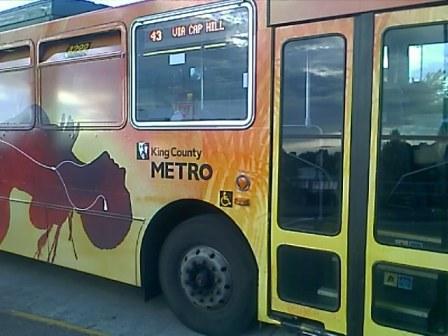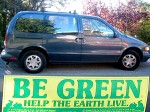A couple of weeks ago, Seattle Times columnist Danny Westneat made a suggestion: Let’s tear down the viaduct before we make a decision about how to replace it. After all, between the time the viaduct is torn down and the time a replacement is built, we’re going to have to make a lot of changes to the way we move vehicles through this city. These changes might work well enough to make us think differently about what’s necessary.
Westneat reminds us that most Seattleites, even transportation experts, expected the September, 2005 bus tunnel closure to snarl traffic downtown. It didn’t. In fact, thanks to many little changes (what he calls “a thousand little things”) traffic has actually improved on some streets.
From the column:
If we’d known back in the ’80s that we could get superior results by making a series of little changes to street use rules and signaling, would we have spent $480 million and ripped up the heart of downtown for nearly four years?
It’s a moot point now. On the plus side, at least we have a place to put light rail.
But the tale of the bus tunnel has me wondering again about our other tunnel, the one not yet built. What to do with the Alaskan Way Viaduct is down to two choices: build a new elevated one or a tunnel. It’s the big ugly or the big costly.
Do we really need either one? What if we did a thousand little things instead?
The Transportation Choices Coalition, a longtime advocate of replacing the viaduct with improvements to surface roads and transit, recently released this statement:
A Tale of Two Cities
Seattle – Local environmentalists are speaking out to express their discontent about the mandate forcing the City of Seattle to vote on the Alaskan Way Viaduct.
With the bulk of the conversation on the Viaduct centered around a “gold-plated” tunnel and “big ugly” elevated structure, many in the environmental community are crying foul, suggesting that the 1950’s framework of defining capacity as moving cars from Point A to Point B has provided us no good option when it comes to the Viaduct. They believe that Seattleites have been pushed by the state into a box that no one wants to be in – choosing a structure that is too expensive or choosing to cut off the city from its waterfront for another 100 years.
What many in the community are calling for is a re-framing of the discussion, with a focus on moving people and goods, not automobiles. Outdated, auto-centric transportation planning has no place in a progressive city like Seattle. They want to see our elected officials articulating a vision for the city that will guide our decisions and state support to see that vision come to fruition.
“The new four-lane tunnel, a surface option – these are very encouraging conversations,” said Jessyn Farrell, Executive Director of Transportation Choices Coalition. “The State has given us a false choice – we haven’t been using the right framework.”
Their charge is that a vote now is premature because all the alternatives – including a 6-lane tunnel, a 4-lane tunnel, another elevated structure, and a surface option – have not gone through a true vetting process.
The environmental community has been staunch in their commitment to fight any alternative that does not reclaim the waterfront. But the aging, compromised Viaduct structure does need to come down as a matter of public safety. The state currently has $2 billion in-hand to start taking down the Viaduct – no matter what alternative is chosen. “After implementing mitigation measures to deal with lost capacity, let’s start taking it down now and have a true discussion of what should replace the Viaduct,” said Farrell. “Only then will we see a reasonable consensus.
I also advocate a surface/transit option, but I see this as a solution everyone can get behind. We have to tear down the viaduct eventually, so why not do it now? If the “thousand little things” work well, we’ll have saved a lot of money to invest in better transportation options. If they don’t, we’ll have more time to make an informed decision about what will.


